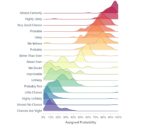
by tyler garrett | Jun 11, 2025 | Data Visual
In today’s hyper-competitive market, visually compelling and responsive real-time dashboards are no longer simply attractive enhancements—they’re mission-critical tools empowering strategic business decisions. Whether monitoring operational metrics in manufacturing, analyzing financial transactions for immediate insights, or enabling dynamic scenario-planning, organizations increasingly depend on dashboards that offer instantaneous interactivity at scale. As you evaluate technologies to build your next-generation dashboards, two prominent options stand out: WebGL and Canvas rendering. How do these two powerhouse technologies compare when it comes to performance benchmarks, usability, and maintaining advanced visualization capabilities? Let’s dive deep into a comprehensive benchmark analysis to help you confidently select the best solution for your real-time dashboarding needs.
Understanding WebGL and Canvas Technologies: A Brief Background
Before diving into benchmarks, it’s essential to first drive clarity regarding what WebGL and Canvas actually entail and why these technologies are so prominently used in contemporary dashboard analytics. The HTML5 Canvas API is a versatile, pixel-based drawing interface supported natively by today’s web browsers. Graphics drawn to the Canvas element are executed directly in JavaScript—making Canvas widely accessible and straightforward for developers familiar with JavaScript.
On the other hand, WebGL (Web Graphics Library), also browser-based, goes a step further by leveraging hardware-accelerated graphics through direct API interaction with your GPU via OpenGL ES. Designed specifically for rendering 2D and 3D graphics smoothly and efficiently, WebGL enables complex data visualizations at ultra-fast speeds—essential for handling real-time analytical dashboards with thousands or millions of data points.
Importantly, each of these rendering paths comes with inherent strengths suitable to different dashboard requirements. The sophistication of your project’s rendering workload, your users’ device capabilities, and your needed interactive features will influence your ultimate technology selection. By clearly defining your visualization goals upfront—potentially by leveraging design methodologies such as those discussed in a previous post on decluttering techniques for complex dashboard design—you set a solid foundation before benchmarking.
Benchmark One: Performance and Rendering Capabilities
WebGL: GPU-Powered Rendering Advantage
When it comes to raw performance, WebGL often emerges as the go-to solution for dashboards displaying large-scale data visualizations, real-time updates, and heavy interaction. Leveraging GPU acceleration means WebGL can smoothly render hundreds of thousands—often millions—of data points interactively and with minimal latency. Our test benchmarks have indicated that WebGL’s frame rates consistently outperform Canvas when corresponding to complex visualizations such as interactive heat maps, detailed network maps, and real-time simulations.
As demonstrated in our previous analysis of network visualization layout algorithms comparison, we observed significantly superior performance in terms of both rendering speed and interactivity when utilizing WebGL. Organizations needing seamless real-time simulation or efficient multi-dimensional visualization are strongly advised to consider WebGL for its unparalleled GPU-driven performance.
Canvas: Practical Simplicity for Moderate Use Cases
Despite WebGL’s superior performance, Canvas still offers compelling advantages, particularly in scenarios involving simpler dashboard presentations, lighter user interactions, and less demanding rendering workloads. Being run directly in JavaScript, Canvas rendering typically holds sufficient performance for basic charts, graphs, and lightweight visual representations. For standard monitoring metrics or typical business intelligence visuals—such as expiration rate charts in employee performance dashboards (the role of business intelligence in employee retention)—Canvas sufficiently balances performance and ease-of-use without extraneous setup complexity.
Benchmark Two: Development and Integration Complexity
WebGL: Higher Complexity, Increased Capability
WebGL’s powerful rendering capabilities do come at a cost: complexity in implementation and a steeper learning curve for developers. Developers need proficiency in GLSL (OpenGL Shading Language) and understanding of GPU pipelines. Debugging WebGL-based applications may prove challenging for teams unfamiliar with graphics programming or detailed GPU resource management. Optimal integration involves robust, often sophisticated architectures— such as discussed in our comparison of polyrepo vs monorepo strategies for data platform code management. Hence, using WebGL demands strategic preparation to ensure project success and operational maintainability.
Canvas: Accessible to Broader Developer Teams
Unlike WebGL’s complexity, Canvas leverages familiar JavaScript syntax, allowing easier integration with existing applications and lower training overhead. Developers skilled in JavaScript libraries typically transition easily into Canvas-based dashboard deployment, achieving efficient implementation without significant specialized graphics knowledge. This accessibility makes Canvas ideal for agile teams focusing on rapid prototyping, iterative development, and quick deployed visualizations. Teams prioritizing speed to market and reducing technical barriers frequently prefer Canvas’ practical simplicity.
Benchmark Three: Scalability and Interaction Handling
Scalability Benchmarks Favor WebGL for Robust Data Visualizations
When aiming for scalability—where seamless handling of large-scale data is paramount—WebGL shines prominently. Organizations implementing large-scale data visualization initiatives, such as those involving vast analytics for predictive modeling, proactive scenario planning, or complex spatial analysis, readily benefit from WebGL’s hardware acceleration capabilities. For instance, when propagating complex data classification tags during transformations—as discussed thoroughly in our guide on propagating data classification tags through transformations—scalability vis-à-vis animation fluidity and interactivity demands robust visual technologies, thus favoring WebGL.
Canvas Demonstrates Limited Scalability and Interaction Support
While Canvas adequately supports moderate real-time visualizations, it can notably struggle under significantly more demanding visual workloads, particularly where interactivity involves frequent redraws or complicated transformations. Since its rendering process is software-driven, performance quickly diminishes as complexity grows. Teams aiming to ensure user responsiveness may encounter limitations when dashboard complexity exceeds Canvas’ practical rendering capacities. Businesses unveiling intricate dashboards with multifaceted filter interactions or data artifacts may therefore encounter contention with Canvas-based scalability.
Making the Optimal Choice: WebGL or Canvas?
Ultimately, making a strategic technology selection between WebGL and Canvas depends heavily upon your dashboard objectives, data complexity, interaction density, and development team’s technical skillset. For dashboards requiring intricate 3D visualizations, continuous animations, or extreme rendering speeds—WebGL represents an unrivaled choice for high-performance visual analytics. Meanwhile, organizations prioritizing rapid prototyping, developer accessibility, and less complex interactivity may comfortably deploy effective Canvas-based dashboards.
Critical to the decision-making process is evaluating these technologies through the lens of future strategy—considering data architecture alignment (such as outlined in our detailed comparison of data mesh vs data lake), cost efficiency concerning development time, and ongoing technical sustainability and scalability. Particularly when supplementing dashboard visualizations with analytical capabilities like cardinality estimation technologies for data analytics management, reviewing each rendering technology in context makes strategic sense.
Engaging with seasoned consulting services, such as Dev3lop’s dedicated AI and dashboard consulting services, provides clarity and targeted expertise to confidently select and implement your next-generation dashboarding solutions effectively, aligning them seamlessly with your organizational strategy and operational excellence targets.
Conclusion: Strategic Visualization Drives Your Competitive Advantage
Your choice between WebGL and Canvas encapsulates more than mere technical preference—it directly leverages your organization’s competitive advantage in making strategic and operational decisions. As revealed by benchmark insights, WebGL’s GPU-accelerated strength fits seamlessly with high-volume data visualization scenarios demanding extraordinary speed and fluid user experiences. Canvas, conversely, fuels accessible, agile visualizations that facilitate team ideation and rapid iterations. Clearly defining your dashboarding vision with approaches like tracing dashboards with Figma and Power BI ensures these visualizations resonate precisely with stakeholders’ needs—driving decisive, strategic outcomes through industry-leading dashboarding excellence.
Thank you for your support, follow DEV3LOPCOM, LLC on LinkedIn and YouTube.

by tyler garrett | Jun 11, 2025 | Data Visual
Decision-makers need compelling stories backed by insightful analytics.
Powerful executive data storytelling is the bridge between complex data analyses and decisive, impactful business actions. Through strategic visualizations and compelling narratives, organizations unlock the true potential embedded within data analytics, enabling clear, actionable decisions for competitive advantage.
If executives are the captains helming the ship, insights derived from analytics become the navigation tools allowing smart, informed decisions. Let’s explore exactly how executive storytelling, infused with advanced analytics, transforms abstract numbers into valuable strategic pathways your organization can confidently pursue.
The Importance of Data Storytelling in Executive Decision-making
Executives today have a limitless influx of data at their fingertips, yet raw numbers alone rarely convey meaningful insights or actionable directives. Data storytelling helps carve a clear pathway through complexity by transforming technical information into understandable narratives. Effective data storytelling communicates not just the “what” but also the “why” behind numbers, identifying opportunities and alerting executives to potential threats ahead of the competition. Without storytelling, even the most sophisticated analysis risks remaining on the shelf unused due to executive disconnect from overly technical presentations.
The power of data storytelling is uniquely evident when executives can quickly absorb complex information, comprehend its strategic impact, and move swiftly to leverage insights for growth or risk mitigation. At our Azure Consulting Services, for example, we’ve assisted numerous organizations in translating intricate cloud analytics into concise, actionable data narratives. This process involves defining clear goals, simplifying analyses, and creating compelling visual aids that resonate well with business leaders’ strategic thinking.
Ultimately, executive data storytelling magnifies the value of analytics, driving smarter decisions and informed strategies based on trustworthy evidence rather than intuition alone. Through a purposeful storytelling approach, business leaders confidently unlock insights to proactively respond to evolving market dynamics.
Transforming Numbers into Narratives: The Core Principles
Clarity and Simplification
Data analytics can quickly become complex, overwhelming executives with an overflow of statistics, charts, and technical language. Yet clarity and simplification are the bedrock of effective storytelling. Executives require clear points distilled from technical details, enabling swift comprehension and decision-making. Businesses must develop easy-to-follow narratives that dissolve complexities, translate analytics into intuitive visualizations, and crystallize key takeaways for strategic outcomes.
To achieve this clarity, focus on concise visual representations, employing widely-adopted frameworks such as bar graphs, heat maps, or business-specific dashboards generated via tools like Tableau Server implementation. Visual storytelling must be intuitive, using understandable metaphors, annotations, and succinct summaries to help executives quickly digest expansive analyses.
Context and Relevance
The true power of data storytelling lies in context. Executives prioritize strategic decision-making that delivers concrete business results. Thus, it becomes essential to frame data analyses within contextually relevant business challenges, opportunities, and strategic goals. Always link the technical insight back into business contexts executives easily recognize—such as sales performance, customer insights, or operational efficiencies.
For instance, actionable contexts, such as historical sales analysis to predict future demand expectations, resonate deeply in executive storytelling. Demonstrating clear links between insights and revenue objectives captures attention quickly, moving beyond abstract interpretation to actionable strategies driving business value and growth.
The Role of Advanced Visualization Techniques in Executive Data Storytelling
Attractive and easy-to-navigate visuals not only amplify the storytelling power of analytics—they ensure attention and comprehension from busy executives. Advanced visualization techniques, such as interactive dashboards, animated charts, and strategic storytelling techniques like scrollytelling implementation for data narrative visualization, can significantly enhance executive understanding of complex scenarios.
Scrollytelling offers contextual continuity, guiding decision-makers step-by-step through analytics-generated insights to specific, actionable conclusions. Interactive dashboards and animations, meanwhile, allow executives to probe deeper into certain insights, personalizing understanding without becoming overwhelmed by extraneous detail.
Similarly, data pipelines enriched through robust data enrichment pipeline architecture patterns enable executives to access quality, timely, contextual visuals streamlined effectively. When coupled with storytelling best practices, visuals and enriched data deliver precision insights tailored explicitly around strategic decision-making, significantly enhancing analytics’ strategic return-on-investment.
Ensuring Data Integrity through Advanced Data Pipeline Architecture
Valuable storytelling depends fundamentally on data integrity. Data accuracy, freshness, completeness, and performance optimization underpin executive trust necessary to leverage analytics as foundations for crucial strategic actions. Reliable data delivery infrastructures are essential, especially when analyzed on real-time or near-real-time bases. This calls for advanced data pipeline architectures incorporating intelligent design patterns such as effective data pipeline dependency resolution and scheduling—ensuring timely intelligence and consistency.
Furthermore, incorporating error mitigation approaches like dead letter queues for failed data processing further boosts reliability and robustness in data environments. Investments in these robust, dependable infrastructures safeguard the credibility necessary to inspire executive-level confidence.
Without solid foundations of data integrity, executives risk making suboptimal decisions based on incomplete or erroneous insights. Strategic data pipelines built for integrity thus become critical prerequisites—supporting streamlined, effective analytics storytelling engagements across organizations.
Balancing Accessibility with Security Using Role-based Access Control
As analytics move increasingly toward real-time storytelling accessible by executives across various sectors within the business, security becomes paramount. Ensuring executives receive prompt access to data analytics without compromising sensitive information calls for robust governance, including employing strategies such as role-based access control for data platform services. By providing precisely aligned access to insights—tailored around roles and responsibilities—businesses effectively balance both innovation and security.
Executives demand seamless, unhindered access to strategic analytics shaped uniquely to their decision-making contexts. Still, organizations cannot afford exposures of sensitive details to unwarranted individuals or departments. Implementing role-based access control (RBAC) ensures executives can swiftly engage powerful insights securely, facilitating real-time analytics experiences without inadvertently compromising regulated or sensitive information.
Such security considerations not only control risks faced by organizations but actively enhance executive data utility. Immediate, securely governed access encourages frequent engagement with analytics-driven storytelling, embedding deeper insights within ongoing strategic evaluations and decision-making practices.
Data Storytelling as a Strategic Driver for Business Growth
Ultimately, executive data storytelling transcends mere informational clarity—it underlines clear pathways to boost sales and drive revenue growth. Successful storytelling anticipates executive innate strategic curiosity, translating numbers and analytics seamlessly into clear business actions, innovation opportunities, valuable market positioning insights, and enhanced customer understanding.
Organizations adopting advanced executive storytelling empower informed strategic pathways toward accelerated growth and improved efficiency. Mature data cultures consistently unlock advantageously proactive opportunities through predictive analytics translated compellingly, leveraging powerful storytelling techniques to operationalize insightful guidance directly into executive strategies.
By confidently investing in executive-level analytics storytelling capabilities, our consulting clients consistently find increased sales efficiencies, faster market responses, optimized operating frameworks, and improved organizational agility—all critical outcomes for maintaining industry leadership positions in today’s rapidly evolving competitive landscape.
Ready to transform your analytics capability into strategic business storytelling that drives meaningful, focused results? Learn more about how we help executives unlock analytics value by visiting our dedicated Azure Consulting Services page today.
Thank you for your support, follow DEV3LOPCOM, LLC on LinkedIn and YouTube.

by tyler garrett | Jun 11, 2025 | Data Visual
In the era of digitization, data has become the lifeblood of corporations aiming to innovate, optimize processes, and strategically enhance decision-making. Corporate communication teams depend heavily on visualizations—charts, graphs, and dashboards—to simplify complexity and present narratives in compelling ways. Yet, with the persuasive power of visual storytelling comes an imperative ethical responsibility to ensure accurate, transparent depiction of data. Unfortunately, misleading charts can distort interpretations, significantly affecting stakeholders’ decisions and trust. Understanding visualization ethics and pitfalls becomes crucial not merely from a moral standpoint but also as an essential strategic practice to sustain credibility and drive informed business decisions.
The Impact of Misleading Data Visualizations
Corporate reports, presentations, and dashboards serve as fundamental sources of actionable insights. Organizations utilize these tools not only internally, aiding leaders and departments in identifying opportunities, but also externally to communicate relevant information to investors, regulators, and customers. However, visualization missteps—intentional or unintentional—can drastically mislead stakeholders. A single improperly scaled chart or an ambiguous visual representation can result in costly confusion or misinformed strategic decisions.
Moreover, in an era of heightened transparency and social media scrutiny, misleading visualizations can severely damage corporate reputation. Misinterpretations may arise from basic design errors, improper label placements, exaggerated scales, or selective omission of data points. Therefore, corporations must proactively build internal standards and guidelines to reduce the risk of visual miscommunication and ethical pitfalls within reports. Adopting robust data quality testing frameworks helps ensure that underlying data feeding visualizations remains credible, accurate, and standardized.
Ensuring ethical and truthful visual representations involves more than just good intentions. Companies need experts who understand how visual design interacts with cognitive perceptions. Engaging professional advisors through data visualization consulting services provides a way to establish industry best practices and reinforce responsible visualization cultures within teams.
The Common Pitfalls in Corporate Chart Design (and How to Avoid Them)
Incorrect Use of Scale and Axis Manipulation
Manipulating axis dimensions or scales is a common yet subtle way visualizations become unintentionally misleading. When charts exaggerate a minor difference by truncating the axis or failing to begin at a logical zero baseline, they distort reality and magnify trivial variations.
To counter this, visualization creators within corporations should standardize axis scaling policies, using full-scale axis contexts wherever practical to portray true proportionality. Transparency in axis labeling, clear legends, and scale standardization protect stakeholders from incorrect assumptions. Enterprise teams can utilize data element standardization across multiple domains, which helps establish uniform consistency in how data components are applied and visually presented.
Cherry-picking Data Points and Omitting Context
Organizations naturally strive to highlight favorable stories from their data, yet selectively omitting unfavorable data points or outliers misrepresents actual conditions. Context removal compromises integrity and disguises genuine challenges.
Transparency should always take precedence. Including explanatory footnotes, offering interactive visual tools for stakeholder exploration, and clearly communicating underlying assumptions help stakeholders understand both the positive spins and inherent limitations of data representations.
Investing in systems to manage data transparency, such as pipeline registry implementations, ensures decision-makers fully comprehend metadata and environmental context associated with presented data, keeping visualization integrity intact.
Misuse of Visual Encoding and Graphical Elements
Visual encoding errors happen often—perhaps color schemes unintentionally manipulate emotional interpretation, or specialized visualization types like 3D visuals distort the perception of relative sizes. Fancy visuals are appealing but without conscientious use, they can inadvertently mislead viewers.
Consistent visual encoding and simplified clarity should inform design strategies. Using known visualization best practices, comprehensive stakeholder training, and industry-standard visualization principles promote visualization reliability. Additionally, market-facing charts should minimize overly complex graphical treatments unless necessary. Readers must quickly grasp the intended message without misinterpretation risks. Partnering with visualization experts provides design guidance aligned with ethical visualization practices, aligning innovation ambitions and ethical transparency effectively.
Establishing Ethical Data Visualization Practices within Your Organization
Businesses focused on innovation cannot leave visualization ethics merely to individual discretion. Instead, organizations must embed visual data ethics directly into corporate reporting governance frameworks and processes. Training programs centered on ethical data-stage management and responsible visualization design patterns systematically reinforce desired behaviors within your analytics teams.
Adopting and implementing internal guidelines with clear standards aligned to industry best practices—and utilizing prerequisite technology infrastructures to manage real-time data ethical standards—is imperative. Understanding and applying analytics methods such as market basket analysis requires clear visual guidelines, aiding clear interpretation.
When handling more complex data types—for example, streaming data at scale—having predefined ethical visualization rules provides consistent guardrails that aid users’ understanding and uphold integrity. This not only bolsters corporate credibility but also builds a strong, trustworthy brand narrative.
Technical Tools and Processes for Visualization Integrity
Establishing ethical data visualization requires effective integration of technical solutions coupled with vigorous, reliable processes. Technology-savvy corporations should integrate automated validation protocols and algorithms that swiftly flag charts that deviate from predefined ethical standards or typical patterns.
Data professionals should systematically leverage data quality software solutions to apply automated accuracy checks pre-publications. Tools capable of intelligently identifying designs violating standards can proactively reduce the potential for misinformation. Moreover, integrating easily verifiable metadata management approaches ensures visualizations are cross-referenced transparently with underlying data flows.
Organizational reliance on consistent infrastructure practices—such as clearly documented procedures for Update Orchestrator Services and other IT processes—ensures both the reliability of data aggregation strategies behind visualizations and upfront system transparency, further supporting visualization ethical compliance. Smart technology utilization paired with clear procedural frameworks generates seamless business reporting designed for transparency, accuracy, and ethical practices.
Continuous Improvement and Corporate Ethical Commitment
Visualization ethical standards aren’t static checkpoints; they are ongoing concerns that require continuous effort, alignment, and evolution. Companies should regularly audit their data reporting and visualization practices, evolving standards based on stakeholder feedback, emerging market norms, or technologies becoming adopted. Digital visualization innovation continuously evolves to support improved accuracy, fidelity, and clear communication; thus maintaining ethical standards requires proactive adaptability.
Visualization ethics adherence creates long-term brand value, trust, and clarity. Leaders must remain diligent, reinforcing responsibility in visualization design principles and ethics. Organizations displaying consistent ethical commitment are viewed positively by both markets and industry leaders, fortifying long-term competitiveness. To sustainably embed visualization ethics within corporate culture, commit to ongoing structured education, regular assessments, and continual improvements. Partnering with skilled consulting organizations specializing in data visualization ensures organizations mitigate risk exposure, reinforcing trust underpinning corporate innovation strategy.
Conclusion: Charting a Clear Ethical Path Forward
Data visualizations wield remarkable power for empowerment and influence, translating complex insights into meaningful decisions. Yet, such persuasive influences must remain ethically bounded by truthfulness and accuracy. Misleading visualization designs may provide short-term, superficial gains shading unfavorable realities, but such practices pose greater reputational and operational risks long-term.
The integrity of how companies represent visualized data significantly influences overall corporate perception and success. Only through conscious dedication, clear procedures, technology investments, and fostering organizational cultures dedicated to transparency can companies ensure design decisions consistently reflect truthful, accountable information.
By recognizing corporate responsibility in visualization ethics and committing resources toward sustained improvements, organizations secure long-term trust, brand integrity, and innovate responsibly. Stakeholders deserve clear, truthful visualizations across every corporate communication to make the best collective decisions driving your business forward.
For more strategic direction in ethical data visualizations and solutions optimized for innovation and accuracy, contact an experienced visualization consultant; consider exploring comprehensive data visualization consulting services for expert guidance on refining your corporate reporting practices.
Thank you for your support, follow DEV3LOPCOM, LLC on LinkedIn and YouTube.

by tyler garrett | Jun 11, 2025 | Data Visual
The exponential surge in data volume is transforming how businesses strategize, compete, and innovate. Today, capturing insights in real-time has shifted from being a nice-to-have capability to a critical necessity. The conventional model of centralized analytics, sending data from its source to distant cloud servers, encounters inevitable bottlenecks and latency issues. As digital complexity grows, decision-makers must embrace faster and smarter ways to visualize data directly at its origin. Enter edge computing visualization—a groundbreaking approach that leverages decentralized processing power and localized analytics to render actionable insights precisely where data originates. In this blog, we’ll show you why edge computing visualization should be on your radar, outlining its strategic importance in reshaping data analytics paradigms and providing practical insights your business can leverage immediately.
What Exactly is Edge Computing Visualization?
At its core, edge computing visualization combines two powerful technology trends: edge computing and advanced data visualization. Edge computing refers to performing data analytics, storage, and computation close to where data is generated—at IoT devices, industrial machinery, sensors, and network gateways. Here, visualization occurs at this same edge tier, providing real-time analytic insights immediately as data emerges from these remote points.
This localized visualization strategy contrasts starkly to traditional centralized visualization models. Instead of sending data to the cloud, potentially hundreds or thousands of miles away, businesses now render innovative visualizations instantly on-site or at nearby regional nodes. The closer the visualization is to the point of origin, the faster teams can respond to real-time scenarios and make data-driven decisions efficiently. Considering the need for timely decision-making in mission-critical domains like manufacturing, healthcare, finance, or transportation, minimizing latency becomes a powerful competitive advantage. Leveraging edge computing visualization therefore helps mitigate traditional network-related bottlenecks, ensuring performance excellence under dynamic operating conditions.
Moreover, edge visualization methodologies drive enhanced data management capabilities. Implementing semantic layer optimization for multi-dimensional analysis assists businesses in transforming raw data points into meaningful, context-rich insights instantly, directly at the edge.
The Strategic Advantages: Why Add Edge Visualization to your Data Analytics Arsenal?
Minimized Latency for Rapid Decision-Making
Each millisecond counts in modern business analytics. While centralized cloud visualization introduces transmission delays, edge computing visualization significantly reduces latency, providing near-instantaneous insight. Real-time analytics improve decision-making considerably—particularly where operational speed translates into revenue, safety, or immediate operational effectiveness. For instance, manufacturers can proactively visualize and correct equipment malfunctions seconds after noticing anomalies on the assembly line instead of hours later. Similarly, healthcare providers can visualize critical patient data immediately, promptly triggering timely interventions to save lives.
By adopting edge visualization, organizations gain improved responsiveness and agility. As an advanced analytics consulting services provider, our team has seen firsthand how implementing systems closer to data generation dramatically enhances business capabilities. This strategic shift empowers companies to maintain control directly at source, using rapid visualization insights to solidify competitive advantages and respond dynamically to changing business landscapes.
Improved Data Security and Compliance
Data breaches have become increasingly prevalent, underscoring the importance of security and compliance throughout the data lifecycle. Traditional visualization paradigms, relying heavily on cloud-based data transfers and centralized databases, heighten the risks associated with data transit and centralized storage. Edge computing visualization effectively mitigates these risks by performing analytics and rendering directly where data originates, reducing unnecessary cross-network exchanges and safeguarding sensitive data.
Adopting edge-based visualizations also aligns well with regulatory frameworks addressing data privacy and governance, reducing compliance risks. A sophisticated methodology, such as our proven data deletion verification and certification process, complements edge computing visualization approaches, bolstering regulatory adherence and ensuring businesses effectively oversee data management directly at the data source.
Practical Applications and Real-World Use Cases
Manufacturing and Industry 4.0
In manufacturing, production lines equipped with IoT sensors generate copious amounts of operational data. Edge computing visualization enables teams to capture immediate insights around equipment health, utilization rates, and product quality directly on the shop floor. Presenting insightful dashboards instantly at the edge empowers staff to identify anomalies early, improving efficiency and productivity while reducing potential downtime from device or process failures.
For example, utilizing accurate demand prediction and precise forecasting analytics, factories dynamically visualize real-time forecasts close to their generation points. Here, edge visualization not only enhances operational effectiveness but also drives unmatched competitive differentiation in today’s hyper-connected industrial environments.
Smart Cities and IoT Implementations
The infrastructure of tomorrow demands sophisticated handling of real-time data flows. Smart cities—leveraging IoT device networks consisting of city sensors, cameras, and traffic management systems—find enormous value in edge visualization. City officials can quickly visualize traffic, environmental conditions, or emergency service availability without sending data back and forth to distant data centers. Real-time data rendering at the edge boosts efficiency in public services and emergency response.
Implementing schema evolution patterns with backward and forward compatibility also helps urban environments continuously adapt their analytical frameworks with evolving data, ensuring seamless integration of future-proof solutions alongside edge visualization technologies.
Technical Considerations: Making Edge Computing Visualization a Reality
Infrastructure and Resource Optimization
Deploying edge computing visualization requires careful infrastructure planning. Organizations must consider the optimal equipment for edge environments, including strategically placed compute and storage resources. Efficient caching, low-latency communication pathways, and fault-tolerant architecture allow businesses to maintain stable edge visualization operations without compromising reliability and robustness in real-world conditions.
Moreover, companies can enhance efficiency by introducing innovative concepts, like recursive materialized view patterns for efficient analytics hierarchies, helping edge computing nodes maintain consistently strong analytical performance despite resource constraints.
Complexity in Data Management and Schema Evolution
Edge visualization introduces new considerations for data management, including maintaining synchronized data schema and versioning across decentralized deployments. Implementing intelligent temporal tables and querying data through time efficiently at the edge enables organizations to effectively track evolving data schema and visualization configurations across distributed edge points.
This is critical for businesses striving to keep their analytical frameworks scalable, interoperable, and backward-compatible, especially as device ecosystems and edge deployments expand rapidly. Prioritizing strong strategies upfront in schema evolution and ongoing optimization ensures edge computing visualization implementations remain manageable and capable of accommodating future needs without extensive rearchitecting.
Edge Visualization Strategy: The Competitive Imperative for Data-Driven Organizations
The writing is on the wall—edge computing visualization represents the next evolutionary step in analytics capabilities for modern digitally-driven businesses. As industries race toward IoT integrations, next-generation connectivity, and real-time analytics frameworks, organizations must position themselves at the vanguard of data visualization technologies.
By proactively investing in edge computing visualization, businesses not only bolster their competitiveness today—they also lay critical groundwork for innovation tomorrow. Companies struggling with common analytics barriers can benefit greatly by checking out our resource on how to fix a failing dashboard strategy with creative insights and using it as a complementary guide in seamlessly integrating edge analytics visualization strategies.
Don’t merely survive in your industry; dominate by harnessing the power and potential of edge computing visualization. By making analytics instant, insightful, agile, and secure, your organization can elevate its performance dramatically—all while delivering consistent value throughout your digital ecosystem.
Thank you for your support, follow DEV3LOPCOM, LLC on LinkedIn and YouTube.

by tyler garrett | May 28, 2025 | Data Visual
Today’s enterprise decision-makers rely more on massive data sets than ever before to shape strategies, optimize operations, and predict market shifts. Visualization plays a crucial role, transforming incomprehensible quantities of raw data into digestible insights. But visualizing large datasets comes with unique challenges. Performance bottlenecks and latency issues can damage user experience, leading to stifled decision-making processes. Enter progressive loading strategies—a proven tactic empowering organizations to handle enormous datasets seamlessly. This practical guide explores progressive loading techniques in-depth, offering actionable insights into improving corporate data visualization workflows. By adopting progressive loading, you can maximize your data visualization investments, ensure smooth interactions, and drive better business results. At Dev3lop, our specialized data warehousing consulting services have empowered businesses to successfully deploy optimized visualization strategies that directly influence an organization’s competitive advantage.
Understanding Progressive Loading in Data Visualization
When visualizing large datasets, loading data into visualization interfaces all at once can be problematic, causing prolonged response times or even application crashes. Progressive loading alleviates these concerns by incrementally loading and rendering data in manageable chunks or layers. This approach ensures a smooth, rapid visualization experience, delivering quick initial results followed by additional data points seamlessly integrated without significant delays.
Consider real-world visualizations—highly interactive dashboards with millions of data points. Traditional methods, which load the entire dataset upfront, create slow-loading dashboards, negatively impacting user experiences. Conversely, progressive loading excels by quickly loading smaller subsets initially, offering immediate visuals and gradually increasing complexity and detail as more data streams in. This strategic approach prioritizes near-instantaneous responsiveness, boosting user adoption and satisfaction. To fully leverage progressive loading’s benefits, familiarizing your team with foundational data concepts such as the UPDATE statement in SQL for modifying existing data ensures your backend supports interactive visualization efficiently.
Leveraging progressive loading is intrinsic to modern data visualization ecosystems. It aligns perfectly with performance optimization principles laid out in our primer on optimizing Spark jobs. Thoughtful deployment of incremental loading tactics illustrates a robust understanding of dataset characteristics, infrastructure constraints, and end-user expectations.
Benefits and Strategic Advantages of Progressive Loading Techniques
Implementing progressive loading methodologies has substantial strategic advantages. First, it significantly improves usability, as decision-makers receive immediate visibility to data, enhancing the speed and relevance of their strategic decisions. Immediate access to critical insights accelerates organizational agility, allowing enterprises swift market responsiveness, thereby directly impacting business outcomes. Our analysis on driving business growth through data analytics reinforces this correlation between speed of insight and competitive advantage.
Secondly, progressive loading dramatically reduces end-user friction and latency frustrations commonly associated with big data visualization. Users are more likely to engage and explore data deeply if initial interactions feel seamless and intuitive. Improved engagement naturally results in deeper analytical insights and richer exploration sessions—key elements for organizations aiming to harness the full value from analytics investments. Progressive visualization strategies inherently boost your organization’s analytics culture and foster enthusiasm among stakeholders, fueling ongoing collaboration and analytics innovation.
Additionally, progressive loading significantly reduces infrastructural overhead. Instead of processing gargantuan datasets all at once, servers handle data incrementally, which makes more efficient and strategic use of compute resources and memory. This ensures cost-effective scalability, supports high concurrency, and helps maintain optimal performance. By utilizing efficient workflows described in our article on sending Twitter data to Google BigQuery using Node.js, enterprises can illustrate the intersection between simplified data handling and meaningful business insights.
Exploring Effective Progressive Loading Techniques
Pagination and Virtual Scrolling
One of the most straightforward progressive loading methods incorporates pagination or virtual scrolling. Data pagination divides large datasets into smaller sections, loading additional data as users move through the data interface. Virtual scrolling offers a continuous experience, dynamically loading data in the background as users scroll—highly effective for tables, lists, or detailed metric reporting.
To leverage this effectively, it is crucial to build robust queries and indexing at the database layer. Knowing how to optimize SQL queries using tools like our introduction to SELECT statements in SQL gives developers strategic control, streamlining pagination workflows at the data handling level.
Level-of-Detail (LOD) Rendering
LOD rendering provides visualization content reflecting the user’s current context. As users zoom out, visualization tools present aggregated summaries, supplying detailed granular data only when a user zooms into specific areas of interest. Techniques such as LOD leverage concepts discussed in our deep dive into dimensional modeling, ensuring efficient querying of hierarchical or aggregated data points.
Dynamic Aggregation and Filtering
Progressive loading also benefits from dynamic data aggregation, presenting aggregated views initially, then dynamically loading more granular detail as necessary. Dynamic aggregation can leverage real-time storage solutions efficiently through technologies and distinctions discussed in our comparative analysis of columnar versus document-based storage. It boosts interactivity significantly by employing strategic caching and filtering mechanisms smoothly transitioning users between different aggregated views and granular data.
Overcoming Common Challenges in Progressive Loading Strategies
As with adopting new technologies and methodologies, organizations may encounter specific challenges when implementing progressive loading strategies. Managing data consistency during progressive loads is critical. Users expect a clearly consistent view, and making sure updated records dynamically integrate properly demands solid backend foundations. Leveraging robust ETL (Extract, Transform, Load) processes significantly mitigates these concerns; learn more about this in our article on the benefits of ETL in data warehousing.
Additionally, organizations must strategically handle state management complexities when incrementally loading data, maintaining UI responsiveness and interactivity. A clearly defined caching mechanism may also be needed, coupled with optimized APIs, to ensure low latency and consistent query results. Using responsive, platform-neutral development environments can greatly mitigate these complexities—refer to our guide comparing Mac versus Windows for JavaScript with VS Code to understand technology choices that align with these goals.
Progressive Loading and Your Analytics Strategy
In analytical ecosystems, progressive loading reinforces an evidence-based decision-making culture. As your team critically enhances user experience and reduces latency issues, improved dashboard exploration leads rejuvenated data exploration cycles for strategic decision points. This alignment significantly influences your organization’s competitive edge. Analytics-savvy organizations already understand that accessibly displayed data insights power decisions more effectively—as discussed deeply in our insights on business intelligence role in employee retention. Progressive loading amplifies these effects significantly within visualizations by dramatically boosting user-centered analytics interactions.
Strategically integrating progressive loading into your overall analytics strategy helps position your organization to quickly extract value from your rapidly growing data repositories without sacrificing responsiveness or limiting user productivity. Embrace this powerful technique to propel your business to new standards of performance, actionable intelligence, and continuous innovation.
Ready to elevate your organization’s analytics capabilities? Our experienced consultants at Dev3lop are specialists in transforming complex technical data analytics challenges into scalable solutions optimized to your enterprise needs.
Thank you for your support, follow DEV3LOPCOM, LLC on LinkedIn and YouTube.

by tyler garrett | May 28, 2025 | Data Visual
Today’s decision-makers navigate complex data landscapes and rely on technologies that provide clarity and actionable insights. Achieving compelling data visualization isn’t just about collecting numbers—it’s about translating data into strategic insight. One robust tool paving the way forward is Vega-Lite, an innovative visualization grammar transforming the way businesses communicate and interpret data. At our core, we focus on offering forward-thinking, strategic guidance—whether it’s delivering advanced visualization outcomes via platforms like Power BI consulting services, or architecting sophisticated data models. Understanding the intricacies of visualization grammar implementations such as Vega-Lite not only ensures your dashboards are insightful but empowers your organization to transition from merely data-aware to data-driven.
The Power Behind Visualization Grammar and Why it Matters
When speaking about visualization grammars, we essentially discuss techniques for defining graphical representations systematically, enabling detailed and customized visual exploration of data. An effective grammar of graphics provides a structured method to specify visualizations—clarifying dataset relationships, encoding data marks, and dictating how the visualization renders—allowing users to create consistent and coherent visuals quickly.
Vega-Lite, developed from the robust foundations of Vega, serves as a high-level grammar of interactive graphics. It leverages declarative visualization specification, empowering analysts and decision-makers to craft meaningful and interactive visual narratives without complex coding. As businesses increasingly acknowledge the high-value proposition of investing in interactive analytics workflows, Vega-Lite emerges as a critical strategic tool, simplifying complex data visualization tasks. Instead of navigating inappropriate waterfall methodologies that impede iterative analysis—as discussed in our previous article explaining why relying on Excel for complex problems translates to waterfall projects—executives can accelerate decision-making cycles through agile, interactive visualizations.
Visualization grammar implementations such as Vega-Lite directly address common data communication barriers by bridging comprehension gaps. Simplified, interactive visual narratives turn abstract figures into understood and actionable intelligence—vital in today’s rapidly evolving business landscape.
Streamlining the Visualization Process Through Declarative Specifications
The beauty of Vega-Lite lies in its declarative simplicity, where users specify what visualization they desire instead of explicitly defining every component of how it should be executed. Declarative languages allow strategists and analysts to quickly iterate visualizations and effectively communicate data insights, aligning visualization closely with strategic business goals and swiftly adjusting visual displays as underlying data or business assumptions evolve.
This straightforward approach positions data at the core, significantly reducing effort compared to traditional programming-driven approaches. Users manage scalable data visualizations seamlessly and integrate Vega-Lite into complex data environments, including modern data lakehouse implementations blending lakes and warehouses, advanced analytics workflows, and reusable data integration patterns explored in our earlier data integration pattern library. By saving time and resources, stakeholders can better focus on gaining insights rather than development details.
Another advantage offered by Vega-Lite’s declarative language is its compatibility with a variety of data processing and analytical methodologies. Any dataset, including those sourced through reusable schemas and modern architectures incorporating techniques like polymorphic schema handling in data lakes, can rapidly transition into meaningful visualizations. This seamless integration emphasizes how Vega-Lite boosts operational agility and ensures business units harness visual insights promptly.
Enhancing User Interaction and Exploratory Analytics
Interactive visualizations are essential for engaging executives and analysts toward active exploration—allowing hypothesis testing, discovery operations, and real-time strategic decision-making. Vega-Lite simplifies adding interactivity by including selection elements, layered displays, tooltips, and interactions like zoom and pan motions. This ease of interactivity enriches exploratory analytics, empowering stakeholders to dive deeper than traditional static reports. Interactive visualizations motivate end-users to ask questions dynamically, fostering deeper understanding and engagement with data-driven insights.
By utilizing interactive practices supported by Vega-Lite, users can promptly verify assumptions, uncover nuance within datasets, and rapidly gain strategic knowledge crucial for agile, responsive decision-making. As explored thoroughly in our article on approximate query processing for interactive data exploration, interactive visualization methods can vastly enhance analytical processes. Decision-makers witness firsthand data-driven results unfold in interactive dashboards—accelerating analytical dialogue throughout the business.
This strengthened interactive exploration transforms basic data visualizations into dynamic tools facilitating iterative analytics, influential in sharpening organizational insight to gain competitive advantage across industries and disciplines.
Advanced Data Processing and Automation with Vega-Lite
Beyond basic interactions, Vega-Lite supports advanced data processing and algorithmic automation features ideal for sophisticated analyses, such as data aggregation, binning, filtering, and sophisticated conditional formatting. Analysts leverage automated data processing features to rapidly identify semantic meanings within datasets—techniques we discussed in detail while exploring advanced analytics railroads like semantic type recognition for automated data processing.
This sophistication enhances analytical precision and broadens possibilities for automated, intelligent visualization generation from large-scale datasets. Work that once required countless manual configurations now benefits from automated pre-processing steps embedded within Vega-Lite, producing compelling visuals nearly instantaneously. This automation allows rapid data-driven actions, reduces manual workload, and minimizes human errors—precisely supporting busy executives who require timely, trustworthy insights without compromising accuracy.
Additionally, Vega-Lite aligns perfectly with organizations already leveraging robust data warehousing techniques and strategic analytics utilization, as we shared in our informative piece highlighting 20 essential tips on data warehousing for executives. Visualizations produced by Vega-Lite ensure businesses deliver reliable and sophisticated analytics—vital for accurate, actionable outcomes driving organizational growth.
Practical Use Cases Driving Business Growth and Innovation
Deploying Vega-Lite-driven visualizations equips businesses across sectors with streamlined capabilities for addressing operational and strategic challenges. By facilitating direct insight into core organizational functions, these visualizations expand beyond mere decorative reports into concrete capabilities that influence decision-making terrain. Organizations leverage data frameworks and analytics strategies to unlock a range of high-impact use cases, further detailed in our extensive guide unlocking the power of data for data-driven businesses.
Medical organizations employing Vega-Lite can visualize patient data, therapeutic outcomes, or resource utilization clearly and concisely, driving informed healthcare policy making. Financial firms similarly harness Vega-Lite visualizations to quickly examine market fluctuations, operational efficiencies, and risk management areas—translating complex market dynamics into digestible, actionable charts guiding strategy development.
By leveraging this innovative tool, organizations foster innovation processes internally—enabling quick data exploration, empowering business units to innovate organically with direct access to meaningful datasets. Visualization opportunities yield strategic clarity, fueling proactive responses to market opportunities, risk mitigation planning, and scenario modeling activities. Vega-Lite implementations thus directly relate organizations’ business strategies closely with visual insights, enabling achievable, measurable business growth and strategic innovation across every operational layer.
Implementing Vega-Lite Strategically in Your Organization
In conclusion, implementing visualization grammars such as Vega-Lite elevates organizational analytics capabilities strategically. Recognizing its powerful interactive capabilities, declarative simplicity, automated data processing, and tangible industry-centric use cases—the decision to integrate Vega-Lite visualizations into your enterprise analytics stack represents proactive leadership and strategic foresight.
Whether your organization currently depends on detailed insights from services like our specialized Power BI consulting offerings or aspires for deeper, granular interactivity in analytical reporting, embracing visualization grammar implementation empowers your leadership team and enhances organizational data culture significantly. Seize the strategic competitive advantage made available by Vega-Lite today and elevate your organization’s decision-making prowess, ensuring sustained operational excellence in the data-driven era.
Thank you for your support, follow DEV3LOPCOM, LLC on LinkedIn and YouTube.
























